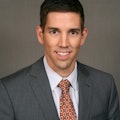Bridging gaps and building trust with dental AI
Many Americans recognize the crucial connection between oral health and overall well-being, yet a considerable number hesitate or overlook essential dental care. Shockingly, one in four adults in the US harbor an untreated cavity,1 and over 47% grapple with periodontal or gum disease.2 These alarming statistics highlight a glaring disconnect between awareness and action, posing a threat to individual health and burdening the health-care system. However, a recent independent survey of more than 1,000 Americans by VideaHealth sheds light on a game-changing solution—Dental AI—that has the potential to empower both dentists and patients.3
Oral health statistics
In December 2023, VideaHealth commissioned a survey of over 1,000 adults, revealing that despite the widespread acknowledgment (94%) that dental health correlates with overall health, a concerning 30% of survey respondents admit to visiting a dentist less than once a year. Cost was raised as the primary deterrent (53%), followed by fear (28%) and perceived lack of urgency (18%). Even when individuals experience dental issues, delays in seeking professional help were commonplace.3
The cost factor looms large in dental care decision-making. If faced with a recommendation exceeding $500 out of pocket, only 44% of respondents would readily comply. However, AI introduces a potential game-changer, with 59% expressing increased willingness to follow their dentist’s recommendations if AI validated their diagnosis.3
AI implementation
We believe dental AI plays a pivotal role in bridging this oral health gap. That’s why we’ve invested in dental AI to offer our network of over 20,000 supported doctors, hygiene providers, and team members access to this cutting-edge technology. We’re not just talking about early cavity detection. AI goes beyond the naked eye, analyzing x-rays with unparalleled precision to identify subtle abnormalities that may be missed during traditional examinations. Dental AI technologies are trained to read x-rays and learn to distinguish areas of disease, such as decay, periapical lesions, and bone loss, with additional capabilities and operational efficiencies being learned every day.
Over the past three months, we have worked to roll-out and train supported practices on using dental AI to serve millions in their communities. These tools are helping dentists further enhance oral and total body health. Industry data surfaced in another VideaHealth study of 470,000 dental patients showed a significant increase in the earlier identification of clinical needs for doctors to discuss with their patients.4 With dental AI, our supported doctors are ensuring their patients receive the care they need, desire, and deserve.
A prime example is that in the past, dentists have been able to flag health disease risk based on evidence of bone loss in intraoral radiographs. However, dentists have only really been able to raise that flag when the bone loss is already pronounced. AI can automatically flag bone loss rate increases early on. This puts our supported doctors in a position to initiate intervention before more serious health conditions develop, slowing and potentially stopping the disease process earlier than in the past.
The dental AI our supported clinicians are working with every day detects and analyzes details that even the most observant human could miss. At the end of the day, supported doctors continue to retain complete control of treatment planning, with AI serving to improve accuracy and objectivity with patients, many of whom are avoiding going to the dentist in the first place.
Empowering patients, transforming care
The VideaHealth survey revealed a common skepticism towards doctors’ diagnoses, with 81% of respondents admitting to questioning their dentist’s recommendations. However, things change when people were informed that AI can spot things on a dental x-ray that a dentist might miss. 59% are more likely to trust their dentist’s advice, and this number goes up to 65% among Baby Boomers.4
People from different age groups (i.e., Gen Z, Millennials, Gen X, Baby Boomers) have similar reasons for liking AI-powered dental diagnoses. They appreciate the idea of preventing diseases, undergoing less invasive treatments, saving money, and avoiding unnecessary treatments.
As doctors, our goal is to build trust and help our patients. Dental AI isn’t just a fancy diagnostic tool; it’s a game-changer that lets patients understand what’s going on. Imagine your dentist showing you on a screen exactly what the AI has found and helping you understand why it’s important. This transparency builds trust and encourages patients to move forward with care, resulting in a higher rate of case acceptance.
The power of dental AI isn’t just in finding issues early, it’s also about helping patients understand their diagnosis. This not only saves money by preventing expensive treatments, but also helps keep people healthier by stopping problems before they get serious, like catching a small cavity before it turns into a big, costly issue like a crown or root canal. That’s the real power of dental AI.
The implications are nothing short of transformative. We see dental AI as a crucial tool in addressing the nationwide oral health crisis. This is more than just early detection and cost savings. It’s about empowering clinicians to close the action gap, transforming oral health care, and ultimately, promoting healthier communities for generations to come.
Editor's note: This article originally appeared in DE Weekend, the newsletter that will elevate your Sunday mornings with practical and innovative practice management and clinical content from experts across the field. Subscribe here.
References
- The High Cost of Oral Disease. Centers for Disease Control and Prevention. Last reviewed June 12, 2023. https://www.cdc.gov/oralhealth/publications/features/the-high-cost-of-oral-dis.html
- Periodontal disease. Centers for Disease Control and Prevention. Last reviewed July 10, 2013. https://www.cdc.gov/oralhealth/conditions/periodontal-disease.html
- Dental AI: A bridge for awareness and action. VideaHealth. https://www.videa.ai/dental-ai-survey
- Dental AI: Hype or reality - the true impact on dentistry. VideaHealth. https://www.videa.ai/dental-ai-impact-whitepaper
Tim Quirt, DDS, MBA, Heartland Dental SVP, Clinical Operations, previously owned 12 dental practices, a dental lab, and a dental assisting school business, and joined Heartland Dental in 2012. In his current role, he leads initiatives to strengthen the support offered by Heartland Dental for doctors across the country. He helped build and scale the hygiene and doctor mentor network and created strategies around the future of hygiene operations, diagnostic AI, and office growth management.
Seth Gibree, DMD, FAGD, Heartland Dental Senior Director of Clinical AI and Innovation, is a published author and industry expert with more than 20 years of experience. Before joining the Heartland Dental support network, he established and owned multiple multidisciplinary dental practices in Georgia, which became the first Heartland supported offices in the state in 2010. Dr. Gibree has served on the editorial advisory board of Dentaltown Magazine since 2009 and is a leader of nonprofit Dental AI Council.
About the Author

Tim Quirt, DDS, MBA, Heartland Dental SVP, Clinical Operations
Tim Quirt, DDS, MBA, Heartland Dental SVP, Clinical Operations, previously owned 12 dental practices, a dental lab, and a dental assisting school business, and joined Heartland Dental in 2012. In his current role, he leads initiatives to strengthen the support offered by Heartland Dental for doctors across the country. He helped build and scale the hygiene and doctor mentor network and created strategies around the future of hygiene operations, diagnostic AI, and office growth management.

Seth Gibree, DMD, FAGD, Heartland Dental Senior Director of Clinical AI and Innovation
Seth Gibree, DMD, FAGD, Heartland Dental Senior Director of Clinical AI and Innovation, is a published author and industry expert with more than 20 years of experience. Before joining the Heartland Dental support network, he established and owned multiple multidisciplinary dental practices in Georgia, which became the first Heartland supported offices in the state in 2010. Dr. Gibree has served on the editorial advisory board of Dentaltown Magazine since 2009 and is a leader of nonprofit Dental AI Council.


